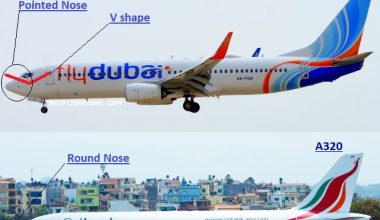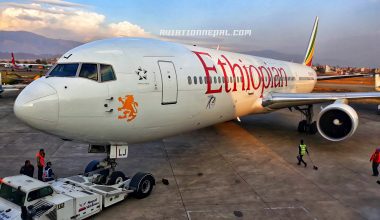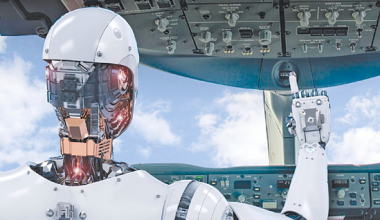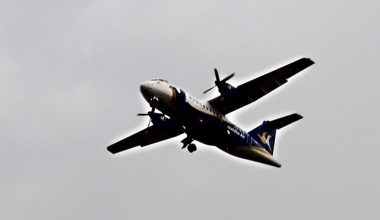Since the Wright brothers flew their first plane in 1903, aircraft designs have come a long way. Planes are now integral to worldwide travel and trade, with manufacturers constantly striving to make more efficient designs with a more extended range and offer more excellent capabilities. In the world of aircraft, bigger isn’t always better. But that hasn’t stopped some enormous ones from taking to the skies. It’s time to stow your baggage and fasten your seat belts because it’s time to look at the top 15 largest planes ever made.
Read More
World’s longest route flights that have been established till now
#15 Tupolev TU-160 Blackjack

The Tupolev design bureau developed it during the 1980s. TU-160 Blackjack remains the largest and heaviest combat aircraft ever to be built. As well as the largest and heaviest plane ever created that flies faster than Mach 2 and the fastest bomber ever. It was the last strategic bomber to be designed for the Soviet Union, and to this day, there are still at least 16 of these aircraft in active use in the Russian Air Force as long-range aviation branches.

First entering service in 1987, the TU 160 requires a four-person crew consisting of a pilot, a co-pilot the other, and a defensive systems officer. It’s a massive 177 feet long, has a wingspan of up to 193 feet, and is powered by four Kuznetsov NK-32 afterburning turbofan engines that produce 55000 pounds of force with each afterburner. This gives the Blackjack top speed of 1380 miles per hour; it’s the equivalent of Mach 2.05, the range of up to 7600 miles without the use of in-flight refueling was particularly impressive, and is that it’s able to achieve this speed with a full armament inside its two internal weapons bays, which can carry almost 100000 pounds of ordnance, which can include cruise missiles or short-range nuclear missiles.
#14 Stratolaunch

Designed by scaled composites for Stratolaunch systems, which has a space transportation company co-founded by Paul Allen, the co-founder of Microsoft. The Stratolaunch is a massive aircraft intended to carry air to orbit rockets to a high enough altitude that they require far less fuel to reach orbit. Currently, only one has been built, and it was only performed one test flight in 2019; unfortunately, since the death of Paul Allen, the company is focused its efforts elsewhere.

Stratolaunch remains one of the most unique and impressive aircraft ever fly though. It’s almost unbelievable and has a twin-fuselage configuration, each of which is 238 feet long and has a total of 28 landing gear wheels to support it while it’s on the ground. Its wings span is 385 feet which is longer than a football field; even though two cockpits, the flight crew only operated from one on the right-hand side. It is powered by 6 Pratt and Whitney PW 4056 engines, each of which produces 56000 pounds of force. Aircraft can carry a payload of up to 250 tons to an altitude of up to 35000 feet. This is quick enough to transport satellites on the launch vehicle. If the project is continued could provide a more cost-effective way for smaller satellite launches to take place.
#13 Boeing 747-8

747 is the most recognizable passenger aircraft ever designed, and it’s credited with changing the face of passenger transport forever. The first version was released in 1970, but the designs have changed substantially over the years with ever-improving technologies. 747-8 is the largest of all the available variants for both cargo and passenger uses, the first entered service in 2011. 250 feet 2 inches long and a wingspan of 224 feet 7 inches, it has a capacity of up to 467 people in 3 classes for the payload of up to 137 tons, powered by four engines that produce the thrust of up to 66000 pounds of force, with cruising speed of 568 miles per hour and has a range of up to 8900 miles. The improvement represents the recommended passenger configuration; the 747-8 can carry 51 more passengers to more freight loads than previous versions of the 747 while being 30 percent quieter 16 percent more fuel-efficient. According to Boeing, being the world’s fastest commercial jet, all of this was possible when making a series of specific changes along with more considerable alterations. Such as lengthening the upper deck using a curved staircase to offer more room, curving the overhead bins using solid-state LED lighting to reduce power consumption.
#12 McDonnell Douglas KC-10 Extender

Designed by McDonnell Douglas, the KC-10 extender is a military aircraft designed specifically to refuel other planes while still in the air. Based on the company’s DC 10 aircraft, the first KC-10 extender entered service in 1981, and they’re still relied upon today, with as much onboard space dedicated to storage tanks as possible. The KC 10 can carry up to 35000 pounds of fuel. It features a specialized centerline refueling pool and drove the whole system installed on the rear of the fuselage on the Starbird side.

Even with the latest technology, midair refueling is still a complicated process. So this requires a dedicated crew member to operate the equipment well two pilots and an engineer work from the cockpit. The plane can also carry up to 75 passengers along with up to 25 pallets of cargo with three General Electric turbofan engines that produce 52000 pounds of force of thrust each. This means that the aircraft, which is 181 feet long and a wingspan of 165 feet, can reach a top speed of 538 miles per hour with a range of up to 4400 miles when fully laden with fuel and cargo.
#11 Airbus 380-800.

The compute with Boeing’s dominance of the large-capacity passenger transport market, Airbus designed the A380, which, when it entered service in 2007, became the world’s largest passenger airliner. With a length of 238 feet in a wingspan measuring 261 feet. It’s a full-length double-decker aircraft that, in its usual configuration, has a capacity of 525 passengers. This can easily be increased up to 853 passengers. The plane is powered by 4 Trent turbofan engines that produce 78000 pounds of thrust each. This gives it a typical cruising speed of 561 miles an hour in a range of 9200 miles; developing an aircraft like this is an incredibly costly endeavor. Unfortunately for Airbus, it seems unlikely the company will ever recoup the $25B spent on it. With changing needs in the airline industry, companies favor more diminutive and more cost-effective aircraft that offer better fuel economy in the age of enormous passenger jet seems to be coming to an end. Although Airbus has successfully delivered 246 A380, the coronavirus pandemic put an end to any further orders. It’s been officially announced that the aircraft will cease production during 2021 after the current order slate is filled.
#10 AN-124 Ruslan

Created by the Antonov design bureau for use by the Soviet Union Air Force, the AN-124 Ruslan first entered service in 1986 as a heavy transport aircraft. The idea was that it would carry huge loads was the heaviest production cargo aircraft in the world for 30 years. Still, in service for the Russian Air Force, it’s the largest military transport aircraft used by any nation on earth can amazingly transport up to 170 tons of cargo, requiring a crew of 6 which includes a pilot, copilot and navigator, chief engineer, electrical engineer, and radio operator two loadmasters.

The plane is 226 feet long, has a wingspan of 240 feet, and also has room for up to 88 passengers in the upper aft fuselage. It’s also powered by for progress D-18T high-bypass turbofan engines, each producing 51000 pounds of thrust in flight at a cruising speed of 537 miles per hour across a maximum distance of 2300 miles. Despite its size and weight, the maximum payload is said by pilots to be relatively easy to fly, and that’s one of the reasons that of the 55 that have been built, 26 are still in service after being upgraded from their original design.
#9 Boeing C-17 Globemaster III

McDonnell Douglas, which merged with Boeing in 1997, design the C-17 Globemaster III in the 1980s to provide the U. S. military with a newly designed heavy transport aircraft. The model first entered service in 1995, and in total, 279 were built before production ended in 2015. several different militaries around the world now use them, and it’s been found to be exceptionally reliable without eating anywhere near as much maintenance as other aircraft design for a similar role.

The C-17 is 174 feet long and has a wingspan of just under 170 feet, and is powered by four Pratt and Whitney F1-17 turbofan engines, and each produces 40000 pounds of thrust. With two pilots and a loadmaster, the planes can fly at a cruising speed of 520 miles per hour with a range of up to 2700 miles with a full payload and carry cargo that weighs up to 85 tons. Depending on the configuration, it can also transport 102 paratroopers, 54 injured patients, and medical staff or oversized vehicles like the M1 Abrams tank. The capability of the Globemaster III is slated to becoming a vital workhorse for all branches of the military. The process is underway to ultimately decide upon a successor to the design current fleet expected to remain in operation for at least 20 or 30 years.
#8 Hughes H-4 Hercules

The Hughes H-4 Hercules was the largest flying boat ever built, until the first flight of the Stratolaunch in 2019 also held the record of having the widest wingspan of any aircraft. But what’s perhaps most surprising of all is that only one was ever constructed, and it only flew once. The plane, also known as the spruce goose, was designed during the Second World War for trans-Atlantic transport aircraft. So, US forces could safely take materials and troops to Britain by air rather than run the risk of encountering German U. boats at sea. In theory, it would carry loads of up to 60 tons and was designed by Howard Hughes himself.

One of the more unusual things about the H-4 was avoiding using valuable materials needed for the war effort. The plane was made almost entirely from birch wood; it was 218 feet long and had an enormous wingspan of 320 feet. It was fitted with 8 Pratt & Whitney R-4360 Wasp Major 28-cylinder air-cooled radial piston engines that power the over 17 foot in diameter propellers. This gave it a theoretical cruising speed of 250 miles per hour, with a range of 3000 miles, but these figures were never approved in reality. The only flight took place in 1947, long after the war had ended. With Hughes at the controls and several journalists on board, it took off from water at a speed of 135 miles per hour, reached a high of 70 feet, and traveled around a mile before landing again, meaning it was airborne for just 26 seconds.
#7 Airbus Beluga XL
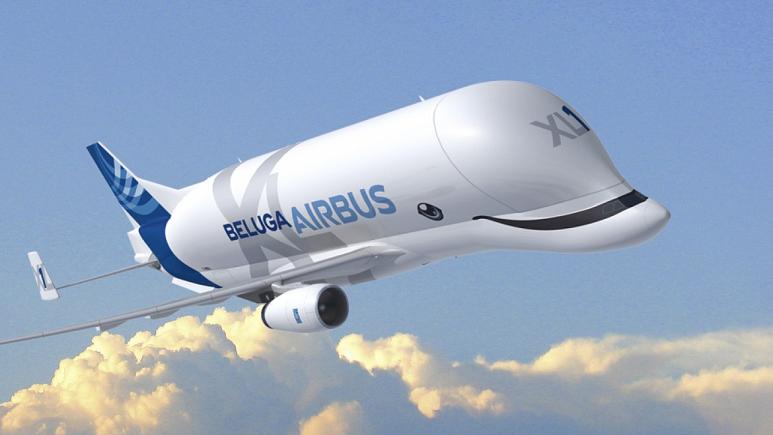
It’s probably the strangest named plane ever built, but once you see the Airbus beluga XL, it becomes apparent why it is said to look so similar to the whale species. Designed to be a new style of heavy transport aircraft fit for modern times, Airbus first revealed it in 2018. It entered service for Airbus transport in 2020. based on a previous smaller design, there are currently five of these aircraft in operation, with a further one expected to be ready by 2023. Airbus is mainly using them to move airplane parts between the different factories.

The beluga XL is unique in that it’s been specifically designed to transport two 350 XWB wings simultaneously. To do this, the 270-foot long plane has a wingspan measuring just under 198 feet has a cargo hold with a volume of 78000 cubic feet. The two rolls Royce Trent 700 turbofan engines each produce 71000 pounds of thrust, meaning they can carry loads that went up to 56 tons maintaining a cruising speed of 458 miles per hour, with a range of 2600 miles when fully loaded. It’s one of the more unusual planes you ever see in the sky; based on the success of the beluga XL; it could well be a design that becomes increasingly more common in the coming years.
#6 Boeing B-52 Stratofortress

The company developed the incredible Boeing B-52 Stratofortress in the 1950s for the U. S. Air Force between 1952 and 1962; 744 of the long-range strategic bombers were built. It was an absolute game-changer for the air force’s capabilities. To carry 35 tons worth of ordinance with a range of 8800 miles before it needs to refuel. The primary intent of the plane was to be able to take nuclear bombs during the Cold War. However, they have, of course, only ever been used to dropped conventional bombs. And 159 feet long and a wingspan of 195 feet, Stratofortress requires a five-member crew to operate thoroughly, including a pilot, copilot, weapons systems officer, navigator, and electronic warfare officer. It was more than 132 tons on its own before any cargo is loaded to make it airworthy; it’s fitted with eight Pratt & Whitney TF33-P-3/103 turbofans engines that produce 17000 pounds of thrust each. Flying at an altitude of up to 50000 feet, it has a cruising speed of 509 miles per hour, top speed of 650 miles per hour if needed. As well as the bombs it carries, which can be a range of different options, B-52 could initially protect themselves with an M61 Vulcan cannon in the tail turret.
#5 Caspian Sea monster

Holding the record for being the largest and heaviest aircraft ever built until 1988, the amazingly named Caspian sea monster was an experimental ground affect aircraft built for the Soviet navy in 1964. despite being classified as a plane, it was regarded more like a boat because it was designed to fly at the height of just 33 feet, to take advantage of the ground effect, transport cargo people at a cursing speed of 270 miles per hour across a range of up to 930 miles. During the Cold War, when the U. S. intelligence first found out about the Caspian sea monster, it wasn’t entirely clear what the vehicle had been built for.

In the end, only one was ever built, benefited from being able to evade radar because it flew beneath the minimum altitude of detection, the Soviet struggle to find a viable use for either. Measuring just under 302 feet long with a wingspan of 123 feet and a tail stabilizer that was 121 feet across, the craft was powered by 10 Dobrynin VD-7 turbojet engines that produce 28000 pounds of thrust each. The sea monster entered testing in 1965 and perform regular test flights for the next 15 years until 1980; because of pilot error, it crashed into the Caspian Sea. It was so severely damaged that along with the fact that there was still no apparent use for it, the decision was made not to repair it, and the wreckage still remains underwater at the crash site to this day.
#4 Boeing 747 Dream lifter

While Boeing 747-400 and 747-8 are aimed at cargo customers looking to transport goods worldwide. The biggest capacity aircraft that’s built by the company is another variant called the 747 dream lifter. It was specifically designed for use by Boeing itself. with three times the capacity of a 747-400, only four have ever been built since being introduced in 2007. It is used mainly for one specific purpose to transport components for 787 Dreamliner from worldwide suppliers. Traditionally aircraft parts would also have been delivered by sea because it’s far cheaper to do so, but it also takes a significant amount of time for the parts to arrive. Boeing needed to keep up many orders; the dream lifter is an adapted 747, the main cargo compartment with a volume of over 65000 feet and a Max weight capacity of 125 tons. It’s a few feet longer than a passenger 747, 235 feet wide, but as the same wings with a span of 211 feet, speed range has been sacrificed to enable the transportation of heavy, bulky loads and is powered by four PW 4062 engines. It can reach a cruising speed of 545 miles an hour, over a distance of up to 4800 miles.
#3 Lockheed C-5 Galaxy

Designed by Lockheed, first introduced in 1970, the C-5 Galaxy was explicitly made for the U. S. Air Force to offer the capability to transport large and bulky loads over long distances. One hundred thirty-one of the more builds, with most remaining in service to this day after incremental upgrades. The C-5 M is the latest version expected to keep operating until at least the 2040s. It is one of the largest military aircraft ever be design, with a length of 247 feet and a wingspan measuring just under 223 feet. With four General Electric CF 6 turbofan engines that each produced 51000 pounds of thrust, Galaxy has a cruising speed of 525 miles an hour and a range of up to 5500 miles from carrying a total cargo weight of 140 tonnes. Over their operational lifespan, C-5 Galaxy has been used for a wide range of functional requirements for delivering much-needed air supplies, deploying military equipment flying too difficult regions, including the McMurdo airbase in Antarctica, and even transporting them space shuttles for NASA.
#2 Aero Spacelines Super Guppy

The Super Guppy, designed by Aero Spacelines, is a huge cargo transportation plane that first took to the skies in 1965. only five were ever built; they were made for the requirements of one client in particular ‘NASA.’ They were and remain the only aircraft ever built; it’s able to transport the complete S-IVB stage, which is the third stage of a Saturn 5 rocket, and the super guppies were vital to enable NASA to launch missions to the moon. And 143 feet long and with a wingspan measuring 156 feet, the super guppy has four Allison 501-D22C turboprop engines that power the four propellers, requiring a crew to operate it has a cruising speed of 250 miles per hour with a maximum range of about 2000 miles when fully loaded with up to 26 tons. Even though the Apollo program has long been canceled in favor of more efficient alternatives, NASA still used the Super Guppy to transport components between facilities. Others can be seen on display worldwide because of their unique design and their place in spaceflight history.
#1 Antonov An-225 Mriya

It was developed in the 1980s, first flying in December of 1988. only one Antonov An-225 Mriya aircraft was ever built; it remains the heaviest aircraft ever made and has the largest wingspan of any aircraft that’s currently flying. It is enormous at 275 feet long 290 feet across the wings. It was built for the Soviet military to transport supplies to deliver significant components used in the Buran space program to carry the space launch vehicles on top of its fuselage.
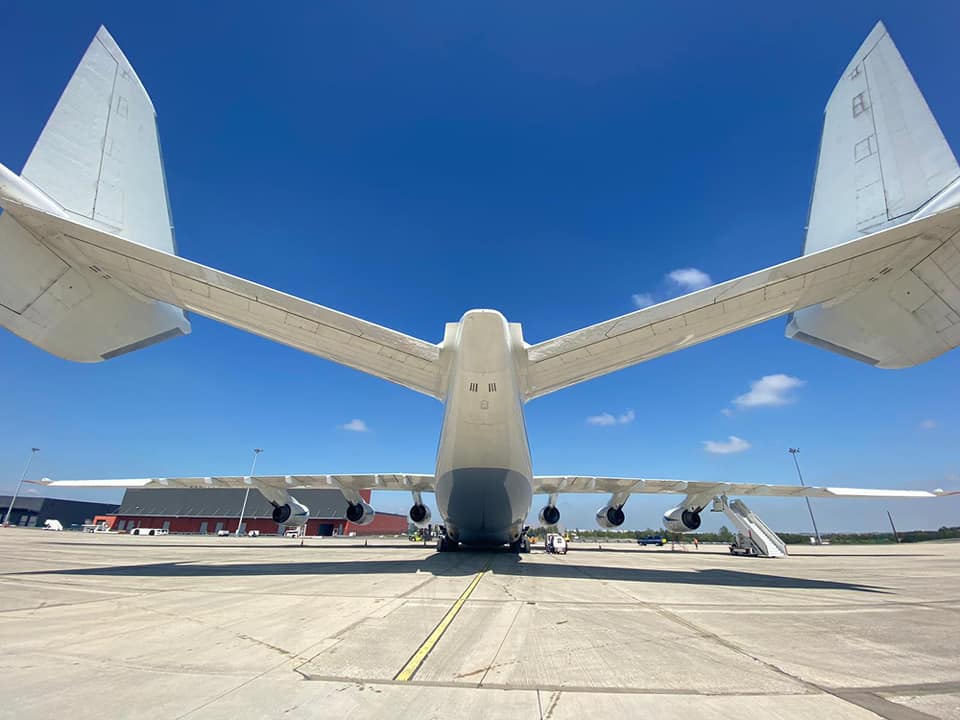
To achieve this, it needed an enormous amount of power provided by the six Ivchenko Progress D-18T turbofan engines, which each generate up to 51000 pounds of thrust. Even when carrying a full load of 220 tons, it has a cruising speed of 500 miles per hour, an effective range of 9600 miles. After initially being very successful for what the Soviet military needed it for, the Maria proved to be too costly to keep operating, so it was mothballed for eight years. However, it entered a new lease of life when the demand for international freight transport started to increase, still in service. Where it’s used to carry particularly heavy or bulky objects such as supplies to humanitarian disasters.

